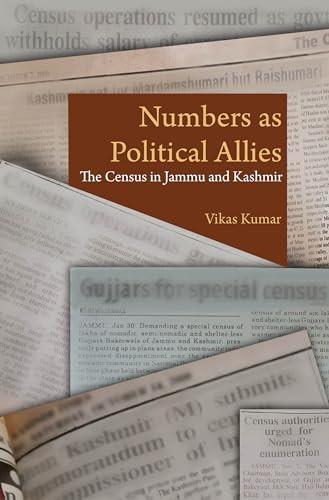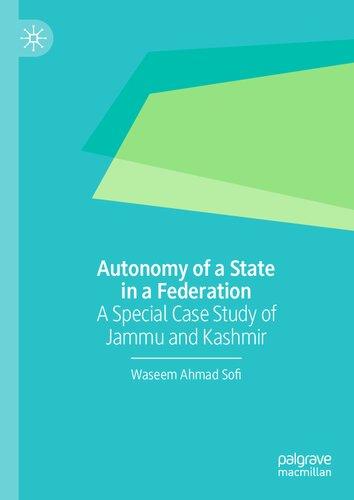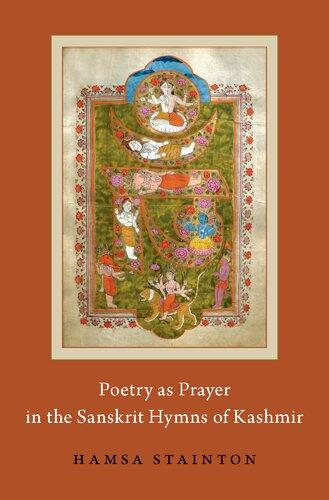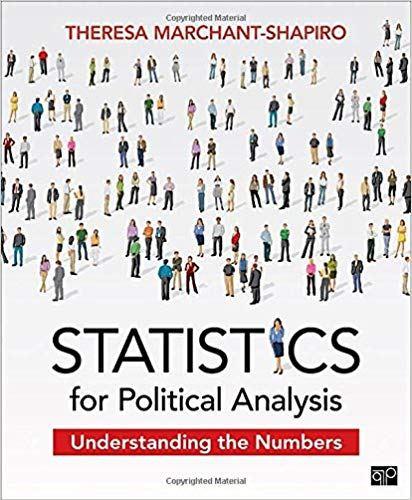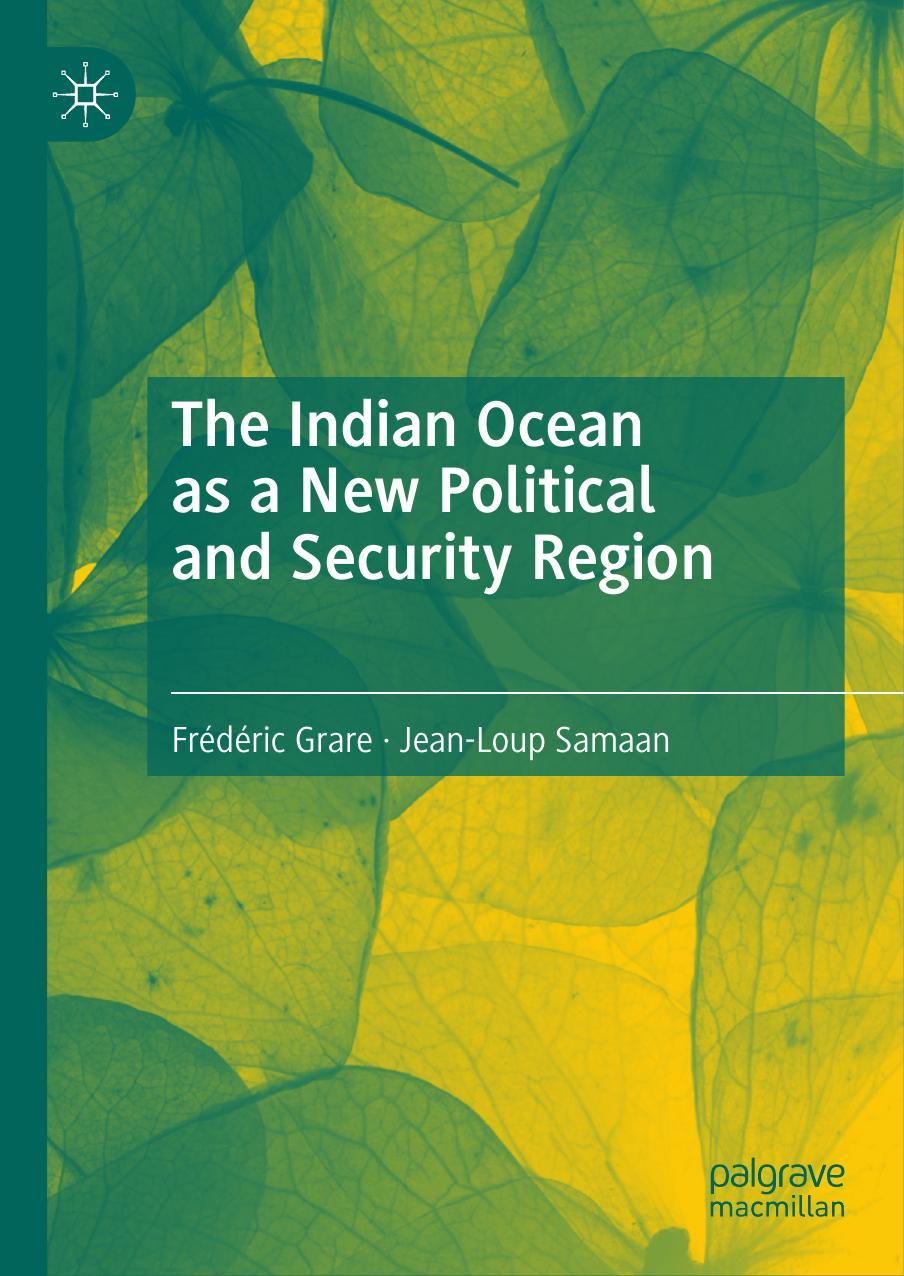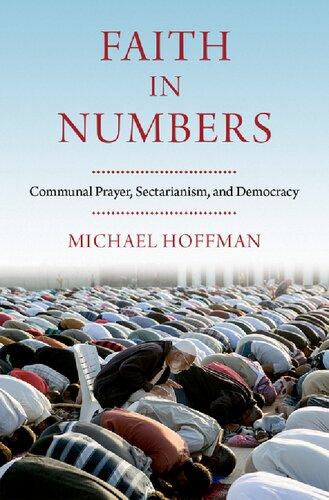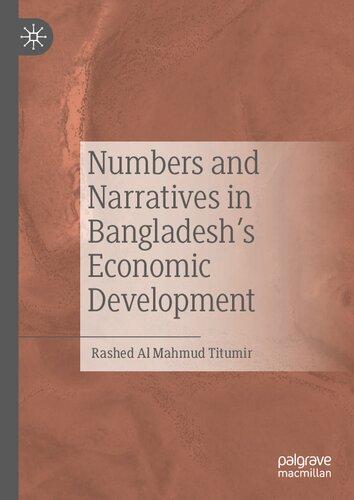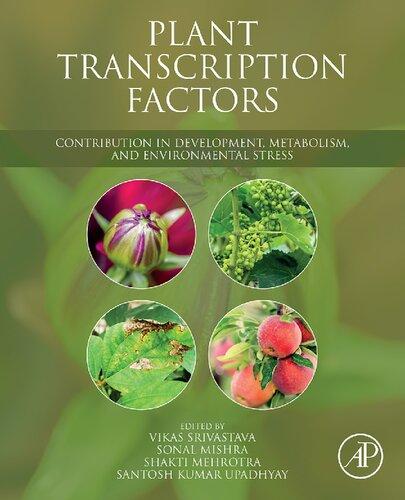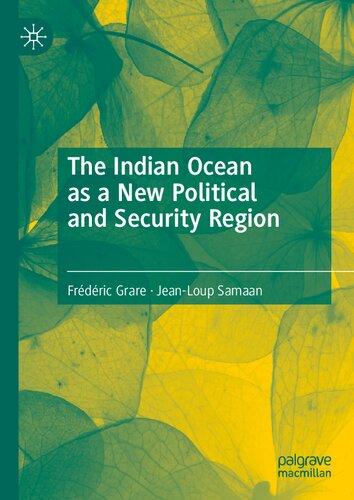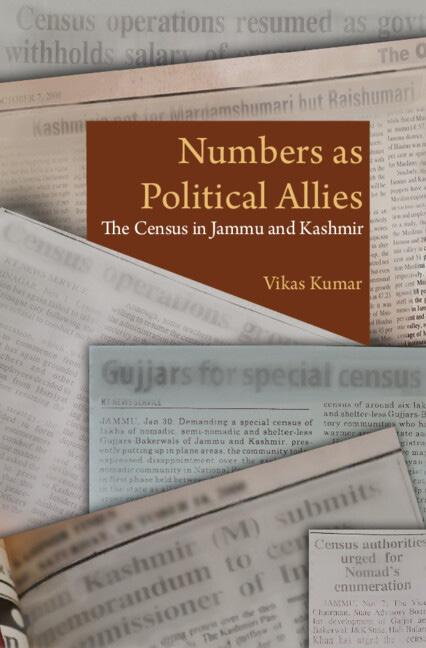Numbers as Political Allies
The Census in Jammu and Kashmir
Vikas Kumar
Shaftesbury Road, Cambridge CB2 8EA, United Kingdom
One Liberty Plaza, 20th Floor, New York, NY 10006, USA
477 Williamstown Road, Port Melbourne, VIC 3207, Australia
314–321, 3rd Floor, Plot 3, Splendor Forum, Jasola District Centre, New Delhi – 110025, India
103 Penang Road, #05–06/07, Visioncrest Commercial, Singapore 238467
Cambridge University Press is part of Cambridge University Press & Assessment, a department of the University of Cambridge.
We share the University’s mission to contribute to society through the pursuit of education, learning and research at the highest international levels of excellence.
www.cambridge.org
Information on this title: www.cambridge.org/9781009317214
© Vikas Kumar 2023
This publication is in copyright. Subject to statutory exception and to the provisions of relevant collective licensing agreements, no reproduction of any part may take place without the written permission of Cambridge University Press & Assessment
First published 2023
Printed in India
A catalogue record for this publication is available from the British Library
ISBN 978-1-009-31721-4 Hardback
Cambridge University Press & Assessment has no responsibility for the persistence or accuracy of URLs for external or third-party internet websites referred to in this publication, and does not guarantee that any content on such websites is, or will remain, accurate or appropriate.
1.1a Sex ratio of Jammu and Kashmir (J&K), 1961–2011
1.1b Sex ratio of Jammu and Kashmir’s (J&K) population aged 0–6 years, 1981–2011 12
1.1c Share of Jammu and Kashmir’s (J&K) population aged 0–9 years, 1961–2011 12
1.1d Ratio of the population of Kashmir to Jammu, 1961–2011
1.1e Ratio of Muslim to Hindu population of Jammu and Kashmir (J&K), 1961–2011
1.1f Population share of Scheduled Castes (SCs) in Jammu and Kashmir (J&K), 1961–2011
1.1g Shina-speaking population in India and Jammu and Kashmir (J&K), 1971–2011 14
1.1h Slum population in Jammu and Kashmir (J&K), 2001–11
1.2a Inland letter card from 2000 advertising the upcoming 2001 census: ‘mirror of the nation’
1.2b Postcard from 2000 advertising the 2001 census: ‘group photograph of the nation’
1.2c Inland letter card from 2000 advertising the upcoming 2001 census
1.3a Commemorative postage stamp and the first-day cover for the 1971 census: 10 March 1971
1.3b Commemorative postage stamp and the first-day cover for the 2001 census: 10 February 2001
1.3c Commemorative postage stamp and the first-day cover for the 2011 census: 8 February 2011 28
1.4 Demographic interventions by the government 31
1.5 Lifecycle of census statistics in India 44
2.1 Armed conflict and non-coverage in the National Sample Surveys (NSS) in Jammu and Kashmir (J&K) 92
2.2a Voting rate in elections in Jammu and Kashmir (J&K), 1962–2009 93
2.2b Voting rate in parliamentary elections in the Kashmir division and Jammu and Kashmir (J&K), 1967–2009 94
3.1 Sex ratio of India, 1961–2011 127
3.2 Drop in the child sex ratio (CSR) of Jammu and Kashmir (J&K), 2001–11 128
3.3a Child sex ratio (CSR) of the states and union territories (UTs) of India, 2001–11 132
3.3b Child population share of the states and union territories (UTs) of India, 2001–11 133
3.3c Jammu and Kashmir (J&K) and other states with low child sex ratios (CSR), 1991–2011 138
3.4 Population share of single-year ages (0–9), 2001–11 139
3.5a Child sex ratio (CSR) (Muslim) of states and union territories (UTs), 2001–11 144
3.5b Child population share (Muslim) of states and union territories (UTs), 2001–11 145
3.6 Population distribution of Jammu and Kashmir (J&K) by age groups, 2001–11 146
3.7 Child sex ratio (CSR) of the districts of Jammu and Kashmir (J&K), 2001–11 148
3.8 Age-specific sex ratio of Jammu and Kashmir (J&K), 2001–11 153
3.9a Child population share and child sex ratio (CSR) of rural Kashmir, 2001–11 155
3.9b Child population share and child sex ratio (CSR) of urban Kashmir, 2001–11 155
3.9c Child population share and child sex ratio (CSR) of rural Jammu, 2001–11 156
3.9d Child population share and child sex ratio (CSR) of urban Jammu, 2001–11
3.10 Birth and death rates of Jammu and Kashmir (J&K) as per the Sample Registration System (SRS), 1972–2018
3.11a Sex ratio of children enrolled in schools of Jammu and Kashmir (J&K), 2005–17 165
3.11b Children enrolled in class 1 in Jammu and Kashmir (J&K), 2005–06 to 2006–17
3.12 Aadhaar saturation in Jammu and Kashmir (J&K)
3.13 Ratio of reported to expected population of Jammu and Kashmir (J&K), 2001–11
3.14 Household size of India, Jammu and Kashmir (J&K) and the two main divisions of J&K, 1981–2011
3.15a Speakers of languages of Ladakh
3.15b Speakers of languages and dialects of Ladakh
4.1a Population of Leh and Kargil, 1901–2011
4.1b Population of Buddhists and Muslims in Ladakh, 1961–2011
4.1c Electorate (state assembly) of Leh and Kargil, 1962–2014
4.1d Electorate of Ladakh, 1962–2014
4.2a Distribution of the electorate size of assembly constituencies, Jammu and Kashmir (J&K), 1962–2014
4.2b Distribution of the electorate size of assembly constituencies, Jammu division, 1962–2014
4.2c Distribution of the electorate size of assembly constituencies, Kashmir division, 1962–2014
4.3 Largest assembly constituency in Jammu and Kashmir (J&K), 1962–2014
4.4a Ratio of the electorate to the census population, Kashmir and Jammu divisions: parliamentary elections, 1971–2009
4.4b Ratio of the electorate to the census population, Kashmir and Jammu divisions: assembly elections, 1962–2008
4.4c Ratio of the mean parliamentary constituency size of Jammu to Kashmir, 1971–2019
4.4d Ratio of the mean assembly constituency size of Jammu to Kashmir 287
5.1 Inland letter card from 2000 advertising the confidentiality guaranteed by the upcoming 2001 census
5.2 Errors attributed to enumerators
5.3 Organisation of census operations
5.4 Census fines relative to the per capita gross domestic product (GDP) of various countries
6.1 Ratio of households in the household phase to houselisting and housing phase, 2001 and 2011
6.2 Sources of errors in the census of Jammu and Kashmir (J&K)
7.1 Data, development and democracy deficits
7.2
7.3 Outreach activities of the Office of the Registrar General of India (ORGI)
7.4
A.3 Evolution of districts of Ladakh
Maps
1.1 States and union territories (UTs) of India, 2011 48
1.2 Union territories (UTs) of Jammu and Kashmir (J&K) and Ladakh, 2019 49
2.1a Survey of India map of Jammu and Kashmir (J&K), seventh edition, with borders separating Gilgit from Ladakh, 2017 73
2.1b Survey of India map of Jammu and Kashmir (J&K), eighth edition, 2019 74
2.1c Survey of India map of Jammu and Kashmir (J&K), ninth edition, 2019 75
2.1d Survey of India map of Jammu and Kashmir (J&K), tenth edition, 2020 76
4.1 Parliamentary constituencies of the Jammu division, 2019 288
Tables
2.1 Area of districts of Jammu and Kashmir (J&K), 1961–2011 70
2.2 Snowbound villages of Jammu and Kashmir (J&K), 1961–81 105
2.3 Census calendar for Jammu and Kashmir (J&K), 1961–2011 106
3.1 Child population statistics of Jammu and Kashmir (J&K) and select states, 2011 131
3.2 Population projections for Jammu and Kashmir (J&K), 2011 131
3.3a Child population statistics of Jammu and Kashmir (J&K) and its two main divisions, 1961–2011 134
3.3b Population share and sex ratio of Jammu and Kashmir (J&K) and its two main divisions by sector, 2001–11 136
3.4 Population share and sex ratio of the two main divisions and religions of Jammu and Kashmir (J&K), 2001–11 143
3.5a Population share and sex ratio of Scheduled Tribes (STs) in Jammu and Kashmir (J&K) and its two main divisions, 2001–11 149
3.5b Population share and sex ratio of Scheduled Castes (SCs) in Jammu and Kashmir (J&K), 2001–11 151
3.6 Migration statistics of Jammu and Kashmir (J&K), 1991–2011 157
3.7 Census, Sample Registration System (SRS) and National Family Health Survey (NFHS) 162
3.8 Adjusted population of Jammu and Kashmir (J&K), 2011 169
3.9 Births, deaths and migration
3.10 Scheduled Tribes (STs) of Jammu and Kashmir (J&K), 2001–11 174
3.11a Major languages of Jammu and Kashmir (J&K), 2001–11
3.11b ‘Other’ languages of Jammu and Kashmir (J&K), 2001–11
3.12a Scheduled Tribes (STs) and Gojri speakers, 2011 180
3.12b Speakers of Khandeshi and Gujari, 2001–11 181
3.12c Speakers of ‘Gojri/Gujjari/Gujar’ and Gujari in Jammu and Kashmir (J&K), 2001–11 183
3.12d Distribution of Gujjars and Bakarwals across divisions of Jammu and Kashmir (J&K) 184
3.12e Gujjars and Bakarwals and Gojri-speaking population, 2011 184
3.13 Distribution of Bhotia and Tibetan speakers, 2001–11 191
3.14a Distribution of Shina speakers, 1971–2011 193
3.14b Shina speakers by tribes, 2011 194
3.15 Generic Tribes of Jammu and Kashmir (J&K), 2001–11 198
3.16 Religions of Jammu and Kashmir (J&K), 1961–2011 200
3.17 Speakers of Ponchi in Jammu and Kashmir (J&K) and India, 2001–11 203
4.1a Population share of major religions and regions of Jammu and Kashmir (J&K), 1961–2011 223
4.1b Share of districts in various sub-groups of population of Jammu and Kashmir (J&K), 2011 224
4.1c Share of sub-groups in the population of districts of Jammu and Kashmir (J&K), 2011 226
4.2 Population of major religions in the Mountainous region of Jammu and Kashmir (J&K), 1961–2011 255
4.3 Population of speakers of major languages in the Mountainous region of Jammu and Kashmir (J&K), 1961–2011 256
4.4 Population of Scheduled Tribes (STs) in the Mountainous region of Jammu and Kashmir (J&K), 2001–11 264
4.5 Migrants of Jammu and Kashmir (J&K) by place of birth, 1981–2011 265
4.6a Slum population of Jammu and Kashmir (J&K), 2001–11 266
4.6b Urbanisation in Jammu and Kashmir (J&K), 2001–11 268
4.7 Delimitation of state assembly constituencies, Jammu and Kashmir (J&K) 280
6.1 Population share and growth of Sikhs in Punjab and India 371
Timelines
2.1 Major events in Jammu and Kashmir (J&K), 1925–2022
2.2 Censuses, surveys and major developments in Jammu and Kashmir (J&K), 1947–2022
68
80
2.3 The 1991 census of Jammu and Kashmir (J&K) 83
4.1 Political contests in Jammu and Kashmir (J&K) around the 2001 census, May–December 2000
242
Preface
In the first two decades after independence, the union government’s role as the facilitator of interstate redistribution was closely linked to decennial population censuses. The allocation of seats in the parliament and federal funds tracked the most recent census data. In the mid-1970s, the growing concern over a rapidly increasing population amidst food and other scarcities forced a hasty uncoupling of the census and key federal policies to make room for more aggressive population control measures. This was, perhaps, necessary to protect the interests of states that had already achieved relatively lower levels of fertility. In the following decades, the census could not be conducted in Assam (1981) and Jammu and Kashmir (J&K) (1991) due to political disturbances. (In 1994, substantive changes were introduced in the Census Act, 1948, to expand the scope of punitive measures, among other things.) The year 2001 was therefore very important for the Census of India because the government was trying to enumerate the whole country once again after a gap of three decades, and there was an expectation that interstate redistribution of resources and power could be recoupled with the headcount. There was also a hype around the first census of the new millennium.
While the census managed to cover the entire country in 2001, it was marred by the politicisation of the headcount. The government had to postpone interstate delimitation to until after the first census taken after 2026. Six states – Arunachal Pradesh, Assam, J&K, Jharkhand, Manipur and Nagaland – could not even use the latest data for intrastate delimitation. In some of these states, the civil society and political parties alleged that the process of enumeration was subverted by vested interests and moved courts to challenge delimitation based on a flawed census. At least five others – Chhattisgarh, Meghalaya, Sikkim, Tripura and Uttarakhand – conducted intrastate delimitation under (political) constraints.
Soon after the 2001 census, Radhabinod Koijam, a former chief minister of Manipur, flagged the politically contentious nature of cartographic and demograhic statistics in his neighbourhood. In 2005, in an interview with Sanjoy Hazarika,
chief minister Neiphiu Rio admitted that Nagaland’s headcount was highly inflated due to political competition among tribes. As a student of engineering and later economics, I found it intriguing that a ‘simple’ measure such as headcount could be so deeply contested. The implication of Rio’s statement became clear only after the state government managed to conduct a better census in 2011 that showed that the reported population of Nagaland contracted vis-à-vis 2001. That nudged me along with Ankush Agrawal to explore the politicisation of the census in Nagaland.
‘It happens only in Nagaland …’ was the common refrain of our interviewees in Nagaland. While a sense of their own exceptionalism that makes Nagas view most of their experiences as ‘unique’ may account for the refrain, it seemed implausible. Since the census is governed by the union laws and supervised by the union bureaucracy, lapses, if any, in enumeration are unlikely to be confined to just one state. So I turned to censuses of other states such as Assam, Manipur, Punjab and J&K and also other multiethnic, federal democracies to check if Nagaland’s experience was, indeed, unique. Around this time Christophe Guilmoto and Irudaya Rajan wrote a paper on district-level fertility estimates based on the 2011 census in which they argued that the child population statistics of J&K were deeply flawed. They also drew attention to the work of Bashir Ahmad Bhat, who had flagged anomalies in J&K’s headcount soon after the 2011 census. A report on the disruption of census-taking in Kashmir by Praveen Swami that appeared in the Frontline magazine in 2000 was another point of departure for the research that informs this book.
When I began my fieldwork in 2015, the plan was to replicate the research on Nagaland where I had been working since 2012. But I quickly realised that the case of J&K was quite different because of the non-synchronous nature of the census, several ad hoc and poorly documented changes in the reference dates, multiple categories of mobile population, the belated identification of the Scheduled Tribes, the intertwining of local and national politics of numbers and the non-availability of data for 1951 and 1991. So even though Nagaland and J&K faced a shared problem, its local determinants and manifestations were different in these two states. Moreover, the erstwhile J&K was at least five times larger than Nagaland. It was more than three ethnolinguistically and culturally different regions, each with its own local politics and a different relationship with New Delhi, packed into one administrative unit. The sudden reorganisation of the state in 2019 and the premature delimitation in 2022 added newer layers to the problem.
Since the data on the 0–6 age group were the most contentious part of the census in J&K, I visited health centres in villages across districts. All but one centre held records of only the recent births, deaths, pregnancies and immunisation, which did not reveal anomalies in the child sex ratio (CSR). Data from the only centre that
Preface
maintained records since 2005–06 raised doubts about the 2011 census. Discussions with journalists, academics, retired and serving government officials, and civil society and political leaders not only added to the initial doubts, but also suggested that the impact of shifting reference dates on the process of enumeration and aggregation of headcounts was poorly understood. This was true even of senior (census) officials who, like everyone else, face a growing paucity and declining quality of metadata. So when I began writing my findings, I decided to clarify the process of enumeration in the state as it is quite different from that of the rest of the country and has changed erratically over time, and, also, discuss the declining quality of metadata.
In the beginning of this research, I had planned to cover only the political context of the census, but later it became clear that the legal and administrative contexts and the priors of the government about census-taking are equally important. Also, I had begun with the (statistical) assumption that each of the broad divisions of the state is dominated by one community, but multiple overlapping majorities became legible at different levels of aggregation during the fieldwork. This also meant an expansion of the geographical scope of the research to Ladakh, where the census data were not affected by any coverage error – that is, an error in the overall headcount. Together these extensions shaped the third part of the book that offers an extended discussion on the context of the production of census statistics in the erstwhile state of J&K and their consumption both within as well as outside that state. The examination of the context cleared the ground for a discussion on census reforms in the last chapter of the book.
In contrast to the existing literature that deals with the quality of census data in a piecemeal fashion, with contributions examining either coverage or, mostly, content errors, this book covers both types of errors and their context-dependence by exploring the entire life cycle of censuses: from the choice of enumerative categories to the use of data in public debates and policymaking. Even the contributions that examine the life cycle overlook crucial aspects such as the legal and administrative frameworks that govern enumeration and the self-image of census departments that is shaped by the self-imagination of developing countries such as India qua modern nation states and affects the quality of the data. This book tries to address such gaps. The impact of changes in data-processing technologies on the quality of data is one of the issues that could not be examined for want of information on the internal processes governing the transition from one technology to another.
The book also tries to fill in a gap in textbooks of statistics and econometrics that strip data of their context and deny students an opportunity to understand data as socially constructed objects with a life of their own. Instead of introducing a string of stand-alone examples from different places and periods, this book examines statistics about the same region (J&K) over an extended period (between 1951 and 2011,
including the censuses that omitted J&K and the ones that were planned but had to be cancelled) and shows how data, development and democracy share a mutually constitutive relationship. While the book is focused on the erstwhile state of J&K, it will hopefully trigger a wider conversation on the context-dependence of the quality of census data as it offers extensive comparisons with other states, particularly Manipur, Nagaland and Punjab and, also, discusses the politicisation of numbers at the national level in India and other developing countries.
Acknowledgements
When I started this research, Jammu and Kashmir (J&K) appeared to be an assortment of mutually inconsistent maps and statistics. B. S. Arun, R. N. Chhipa, Sanjoy Hazarika, Sevanti Ninan and Verghese Samuel introduced me to others who were based in Jammu and Srinagar or had worked there in the past, and then I gradually found my way through the state and added flesh to the barebones coordinates and numbers.
Census and other government officials in Jammu, Srinagar, Chandel, Guwahati, Imphal, Kohima, New Delhi, Phek and Senapati helped me understand the larger context of enumeration. In particular, Feroze Ahmed and Farooq Ahmad Factoo, the directors of census operations (DCOs) of J&K for the 2001 and 2011 censuses, respectively, and Metongmeren Ao and V. Hekali Zhimomi, the DCOs of Nagaland for the 2001 and 2011 censuses, respectively, were generous with their time and insights. Verghese Samuel patiently answered several rounds of questions. Senior officials in the Directorate of Health in Jammu and Srinagar, health department staff across the districts of Kashmir and Jammu, and officials at the Srinagar Municipal Corporation and the Tribal Affairs Department spared time to discuss population statistics. Various government officials helped with accommodation in remote locations.
Journalists and editors Harinder Baweja, David Devadas, Ahmad Ali Fayyaz, Altaf Hussain, Anuradha Bhasin Jamwal, Arun Joshi, Zulfiqar Majid and Praveen Swami offered crucial inputs on various developments they had covered in the state and helped me connect with others. Discussions with Shabeer Ahmad, Pramit Bhattacharya, Masood Butt, C. Chandramouli, Shah Mohammad Chaudhary, Rekha Chowdhary, Ajay Chrungoo, Rajiv Chuni, A. S. Dulat, Labha Ram Gandhi, Kunal Ghosh, M. S. Gill, N. Gopalaswami, Wajahat Habibullah, Mohammad Iqbal, P. T. Kunzang, Parveen Jaryal, R. K. Kalsotra, Feroze Khan, Zafar Ali Khatana, Vipul Kumar, Indha Mahoor, Taj Mohiudeen, Hari Om, N. A. Prasad, G. K. Pillai, Ali Mohammad Sagar, Satinder Sahani, Tsering Samphel, Ghulam Sayiden, Dipankar Sengupta, Javaid
Acknowledgements
Rahi, Nasir Shabani, Skandan Krishnan, P. Stobdan, Theja Therieh, S. Tsogphel, Nawang Tundup, Himanshu Upadhyaya, Aditya Verghese and Lama Chosphel Zotpa, among others, enriched my understanding. Asgar Ali Karbalaie and Nawang Rigzin Jora spared time for discussions on a wide range of issues. Ankush Agrawal, Noor Ahmad Baba, Bashir Ahmad Bhat, Chakraverti Mahajan and Verghese Samuel offered feedback on various problems I faced vis-à-vis reconciling reported facts and field observations.
The manuscript developed over a long period. Several batches of students who took the course ‘Political Economy of Government Statistics’ at Azim Premji University, Bengaluru, served as sounding boards and offered valuable feedback on various ideas that animate this book. P. G. Babu, Sanjoy Hazarika, Chandan Gowda and Poonam Singh were always available for discussions and offered valuable advice at different stages.
After I completed a preliminary draft of the book, Manfred Holler created a much-needed opportunity to present the entire argument at the Adam Smith Seminar organised by the Centre of Conflict Resolution, Munich, where the audience offered helpful feedback. Gujarat National Law University, Gandhinagar, and Vellore Institute of Technology also offered opportunities to present parts of the fifth and seventh chapters, respectively. Charles Chasie of the Kohima Educational Society invited me to deliver a couple of lectures in Dimapur and Kohima on the politics of numbers, which allowed me to look at the manuscript as well as J&K from the other end of the country. A. Bimol Akoijam and P. G. Babu offered similar opportunities in Manipur and Mumbai, respectively. The imprint of the north-eastern detours is most clearly visible in the later chapters of the book.
B. S. Arun (Deccan Herald ), Rama Lakshmi (The Print), Sevanti Ninan (The Hoot) and Sangeeta Barooah Pisharoty (The Wire) made room for contributions on statistics and public policy in their respective publications. East Asia Forum, too, served as a platform for sharing preliminary ideas in this regard. Parts of Chapters 5 and 7 draw on my contributions to the Statistical Journal of the IAOS, the journal of the International Association for Official Statistics.
Libraries at the Directorates of Census Operations in Srinagar, Jammu, Imphal and Kohima, and the Office of the Registrar General of India (ORGI), New Delhi, provided various census publications. The chief electoral officer’s office in Jammu shared a compilation on electoral laws and delimitations. The Srinagar office of the Jammu and Kashmir National Conference provided copies of a recent edition of Naya Kashmir, while the Jammu office of the Jammu and Kashmir National Panthers Party provided copies of its manifestos and pamphlets. The archives at the Nehru Memorial Museum and Library, New Delhi, helped me access old pamphlets related to J&K, while the library of the Ministry of Defence provided access to publications on the 1965 and 1971 wars. The library of the University of Kashmir, Srinagar,
Acknowledgements
and the archives of the Kashmir Times provided access to back issues of newspapers. Anuradha Bhasin Jamwal, Hari Om and Javaid Rahi, too, shared copies of older newspaper articles. Anuradha Bhasin Jamwal allowed us to use images from the Kashmir Times archive for designing the book cover. The library of Azim Premji University offered excellent support over the years.
Adil, Bilal, Sourabh Khajuria, Manzoor, Stanzin Phunchok, Rajesh Thapa and Umar offered much-needed travel support. The fieldwork that extended from 2015 to 2022 was punctuated by sporadic political unrest and, more recently, the Covid-19 pandemic. During such interruptions, several interviewees were kind enough to continue the conversations over the telephone and, in a few cases, email. I am grateful to Azim Premji University for institutional support throughout this period.
I first discussed the idea of writing about J&K’s census with Anwesha Rana at Cambridge University Press several years ago. She offered invaluable support and encouragement over an extended period, putting up with several delays, without which I would not have managed to complete the book. She also created an opportunity to present a draft of a chapter at a conference. Two anonymous referees of the Press helped improve the manuscript by identifying sections that did not fit well and those that needed additional discussion. Priyanka Das carefully edited the manuscript and helped incorporate changes to capture the impact of the latest round of delimitation on demographic politics in J&K and insights from the reports of the 2011 census that were belatedly released. Anandadeep Roy worked with a large number of images I shared to help design a cover that captures the essence of the book.
In this short note, I have been able to acknowledge only a few of my hosts and interlocutors based in J&K, Ladakh and elsewhere in the country. Many more have been omitted to maintain anonymity. I remain indebted to all of them for their goodwill and warmth.
Abbreviations
AFSPA Armed Forces (Jammu and Kashmir) Special Powers Act, 1990
APDP Association of Parents of Disappeared Persons
APSCC All Parties Sikh Coordination Committee
BBC British Broadcasting Corporation
BJP Bharatiya Janata Party
BPL below poverty line
BSP Bahujan Samaj Party
CAG Comptroller and Auditor General of India
CBR crude birth rate
CDR crude death rate
CMIE Centre for Monitoring Indian Economy
CPS Centre for Policy Studies, Chennai
CSO Central Statistics Organisation/Central Statistics Office
CSR child sex ratio
DCO director of census operations
ECI Election Commission of India
FPT final population totals
FSU first-stage unit
GDP gross domestic product
GoI Government of India
GoJK Government of Jammu and Kashmir
GoUTJK Government of the Union Territory of Jammu and Kashmir
GPT general population totals
xxvi
HMIS Health Management Information System
IAS Indian Administrative Service
IB Intelligence Bureau
INC Indian National Congress
J&K Jammu and Kashmir
Jt DCO joint director of census operations
JSPA Janagoshthiya Samannay Parishad, Assam
LAHDC Ladakh Autonomous Hill Development Council
LBA Ladakh Buddhist Association
LoC Line of Control
MHA Ministry of Home Affairs
MOSPI Ministry of Statistics and Programme Implementation
MPCE monthly per capita consumption expenditure
NC National Conference
NEFA North-East Frontier Agency
NFHS National Family Health Survey
NGO non-governmental organisation
NGR natural growth rate
NPC National Population Commission, Nigeria
NPR National Population Register
NRC National Register of Citizens
NSC National Statistical Commission
NSS National Sample Survey
Abbreviations
NSSO National Sample Survey Organization/National Sample Survey Office
ORGI Office of the Registrar General of India
ORGI&CC Office of the Registrar General of India and Census Commissioner
PCA primary census abstract
PDP People’s Democratic Party
RGI registrar general of India
PEC post-enumeration check
PEPSU Patiala and East Punjab States Union
PES post-enumeration survey
Abbreviations
PLSI Peoples’ Linguistic Survey of India
PNDT prenatal diagnostic techniques
PPT provisional population totals
RSS Rashtriya Swayamsevak Sangh
RTI right to information
SASB Shri Amarnathji Shrine Board
SC Scheduled Caste
SCO superintendent of census operations
SoI Survey of India
SRB sex ratio at birth
SRS Sample Registration System
ST Scheduled Tribe
TFR total fertility rate
UA urban agglomeration
UAE United Arab Emirates
UN United Nations
US United States
UT union territory
WPRAC West Pakistan Refugees Action Committee
